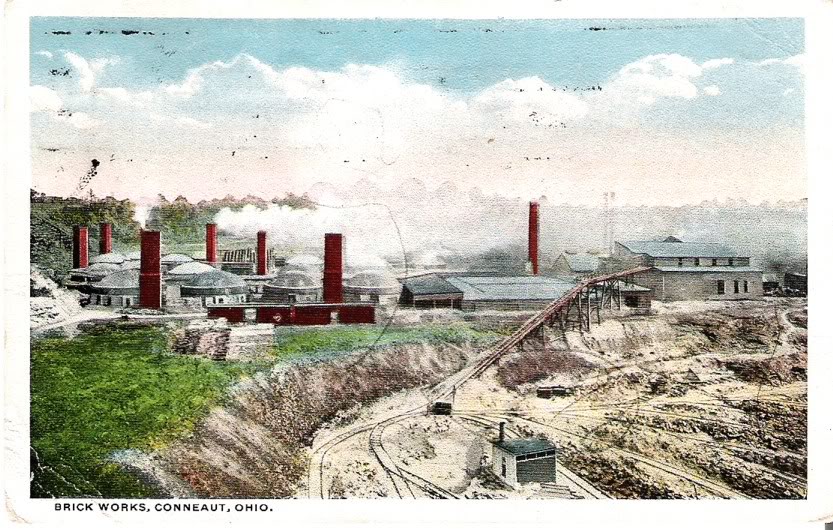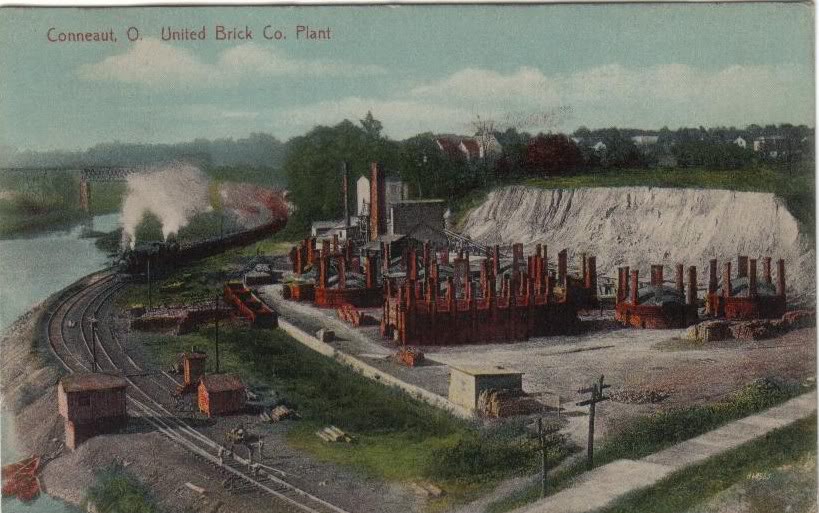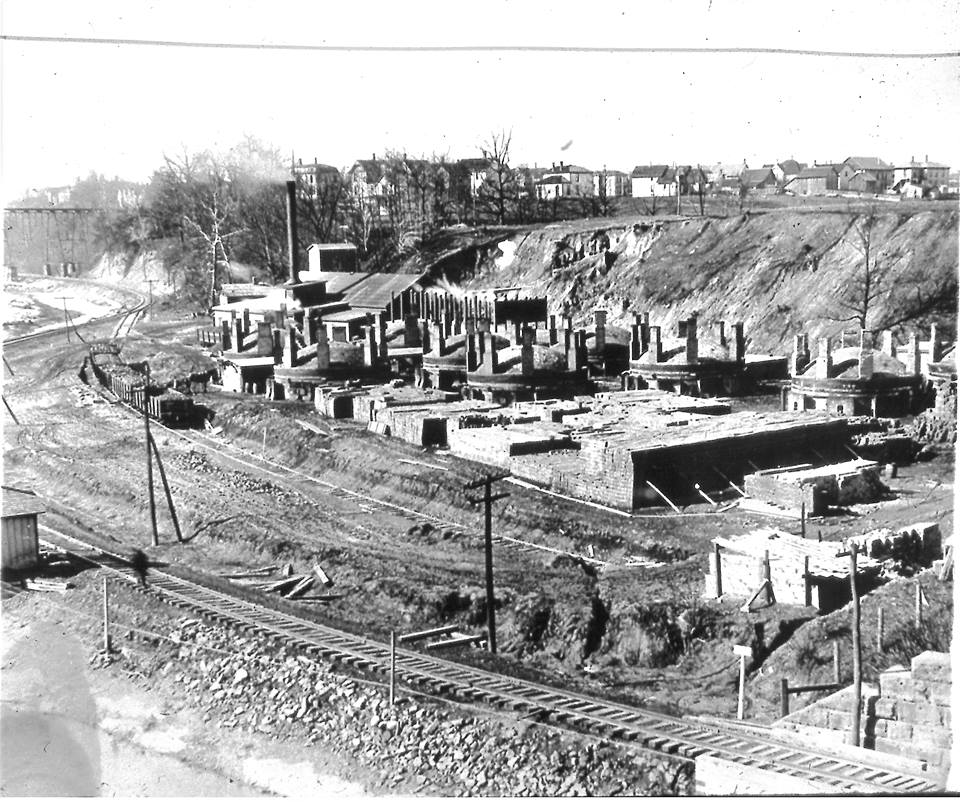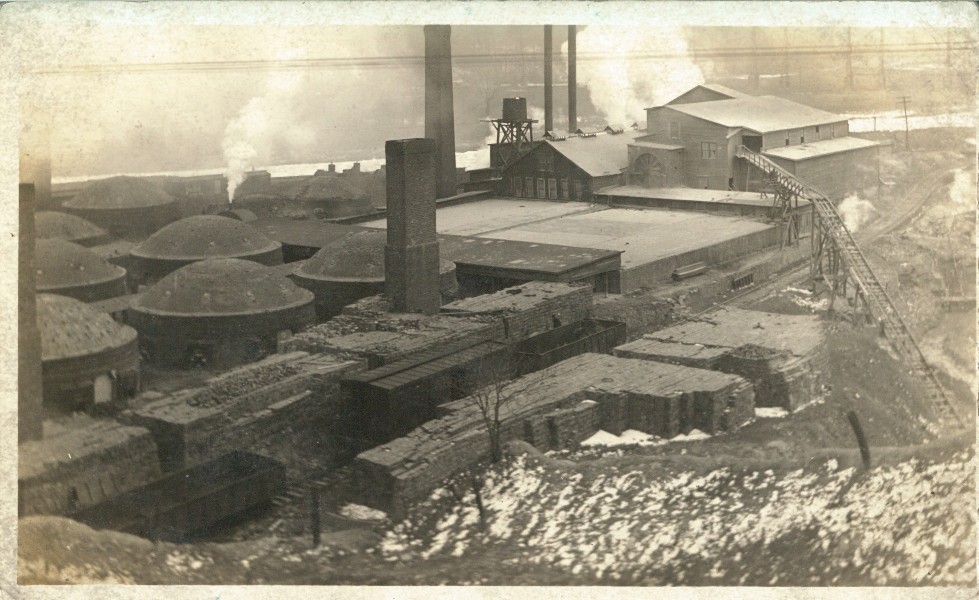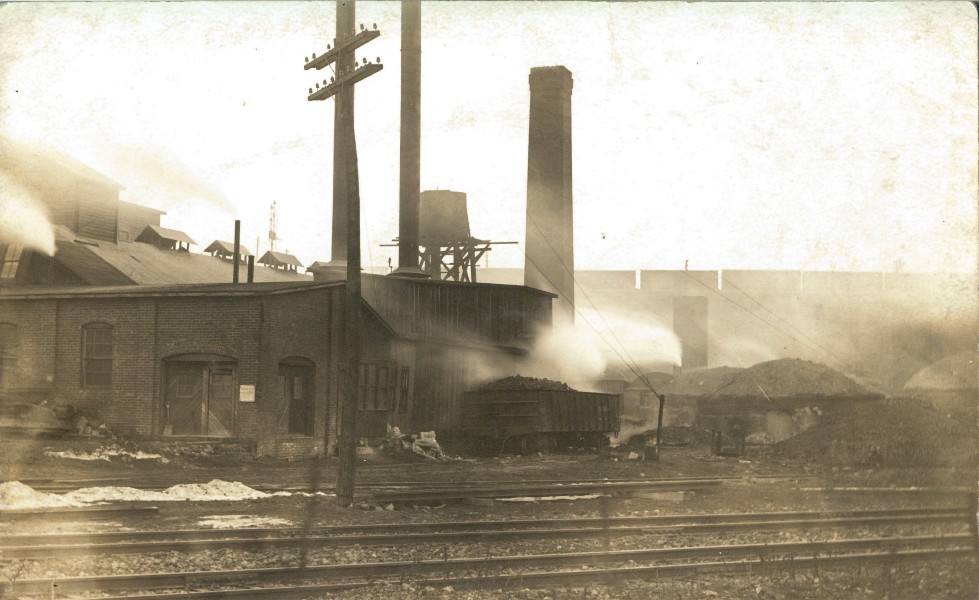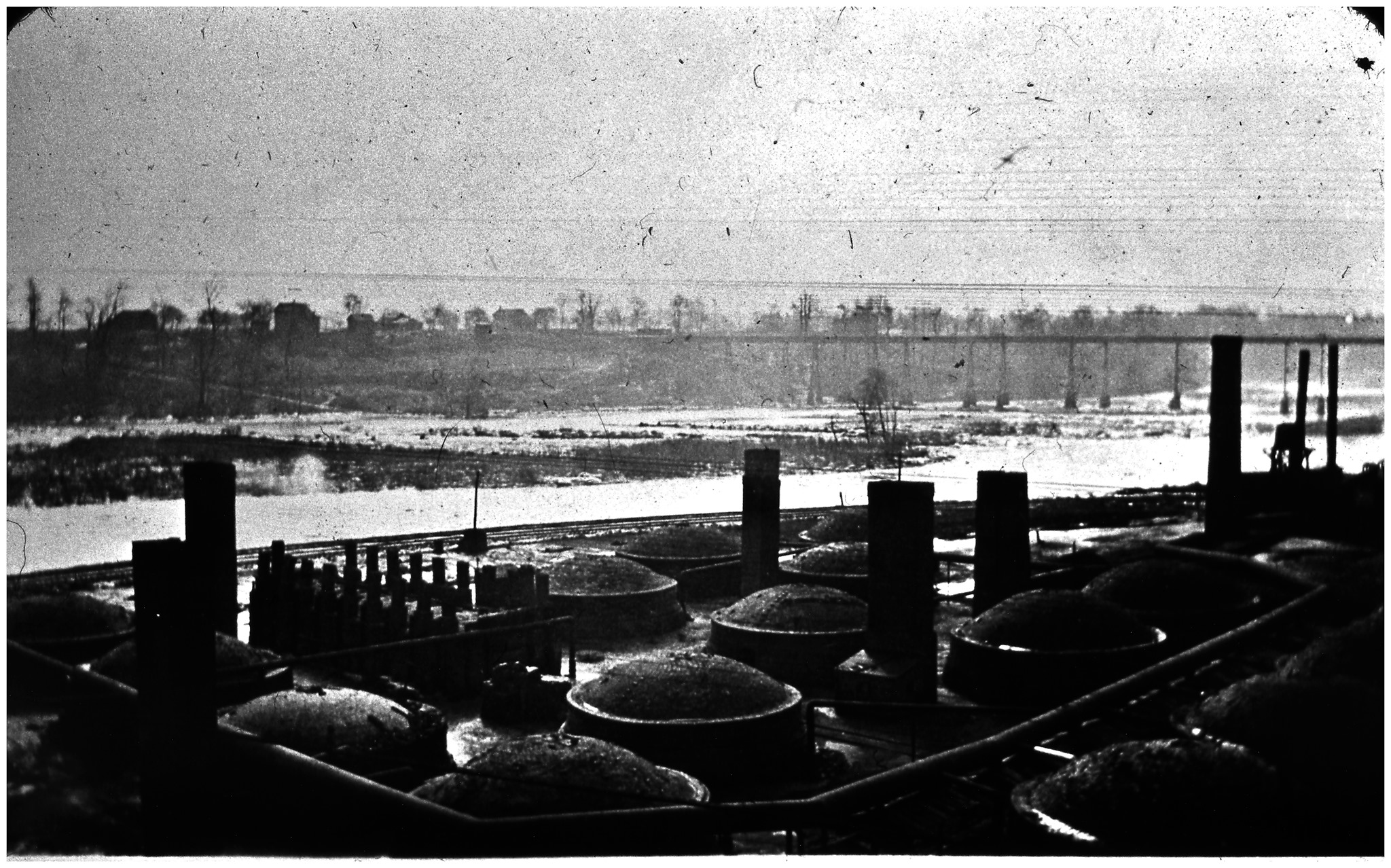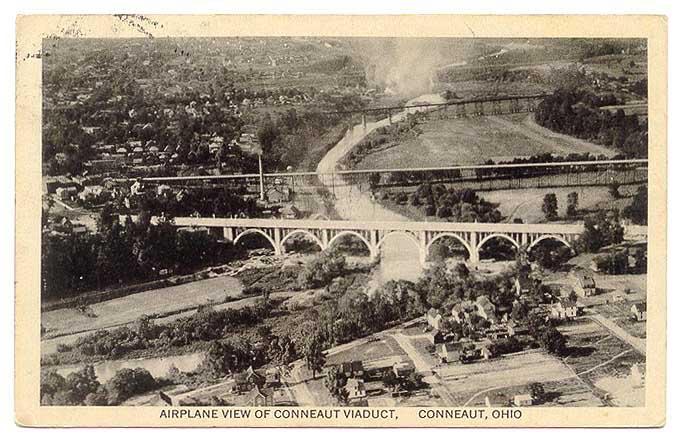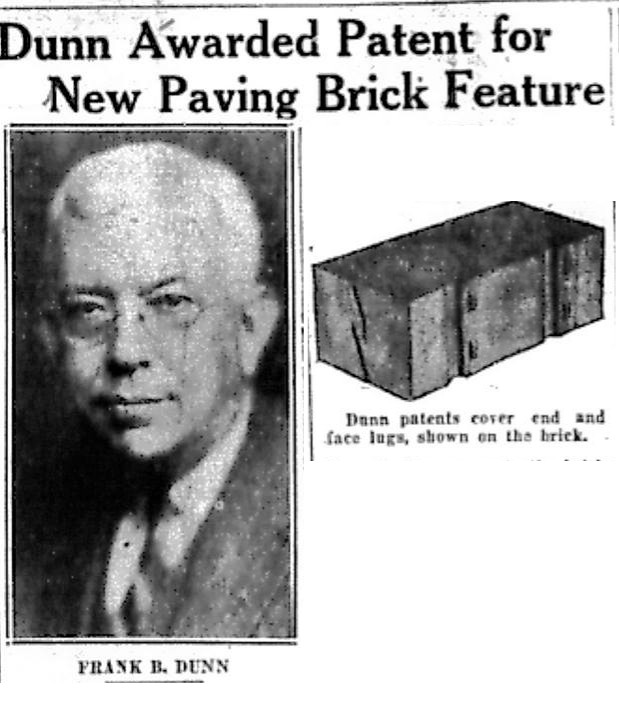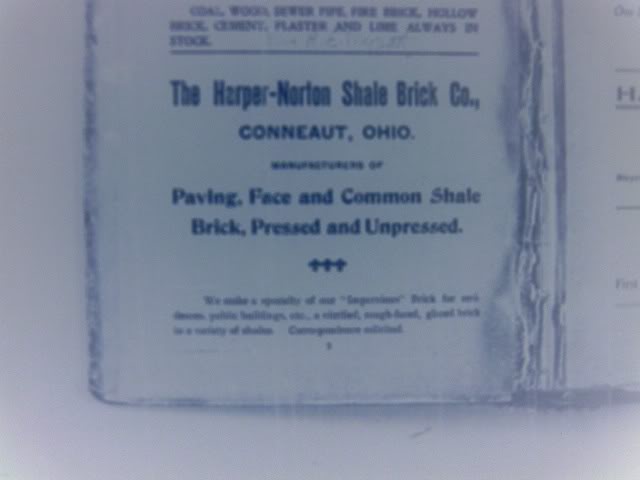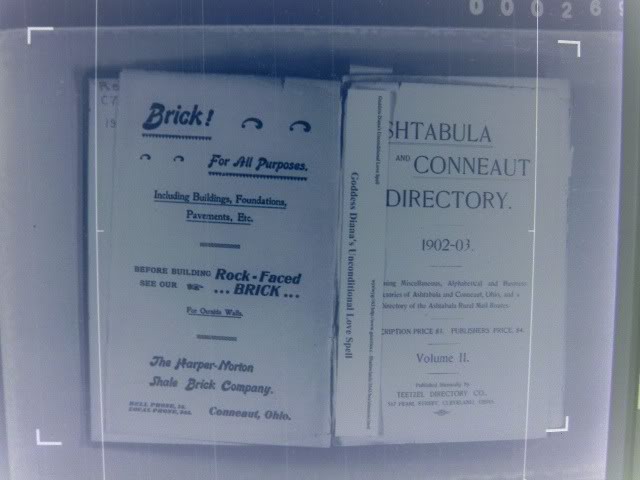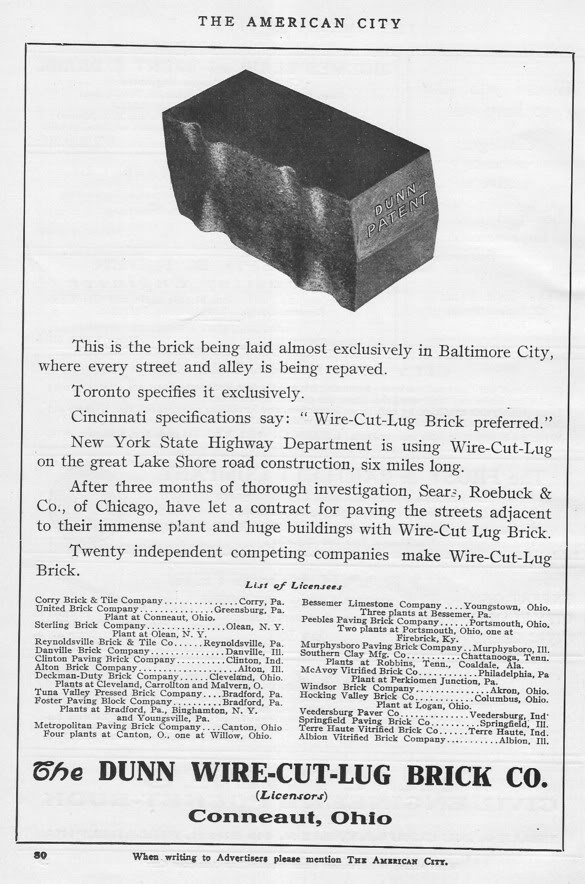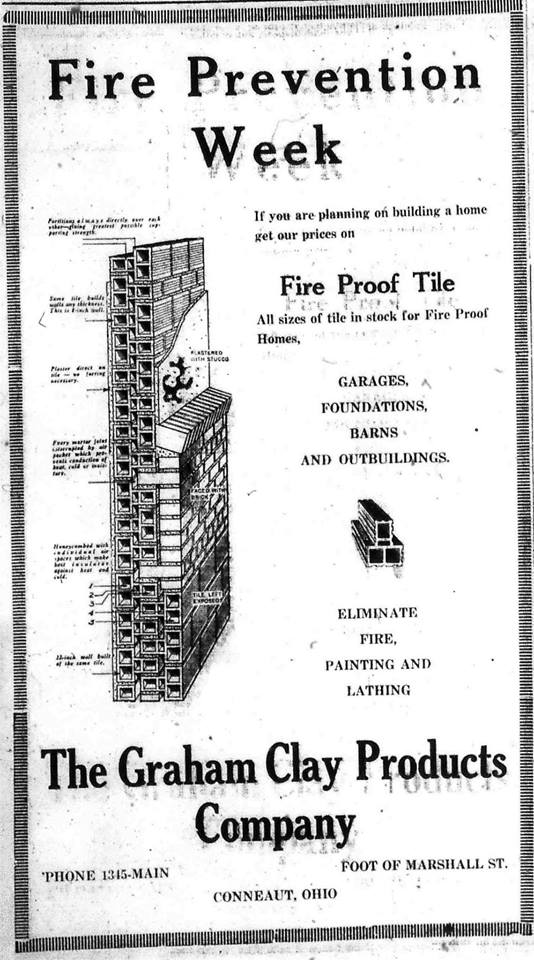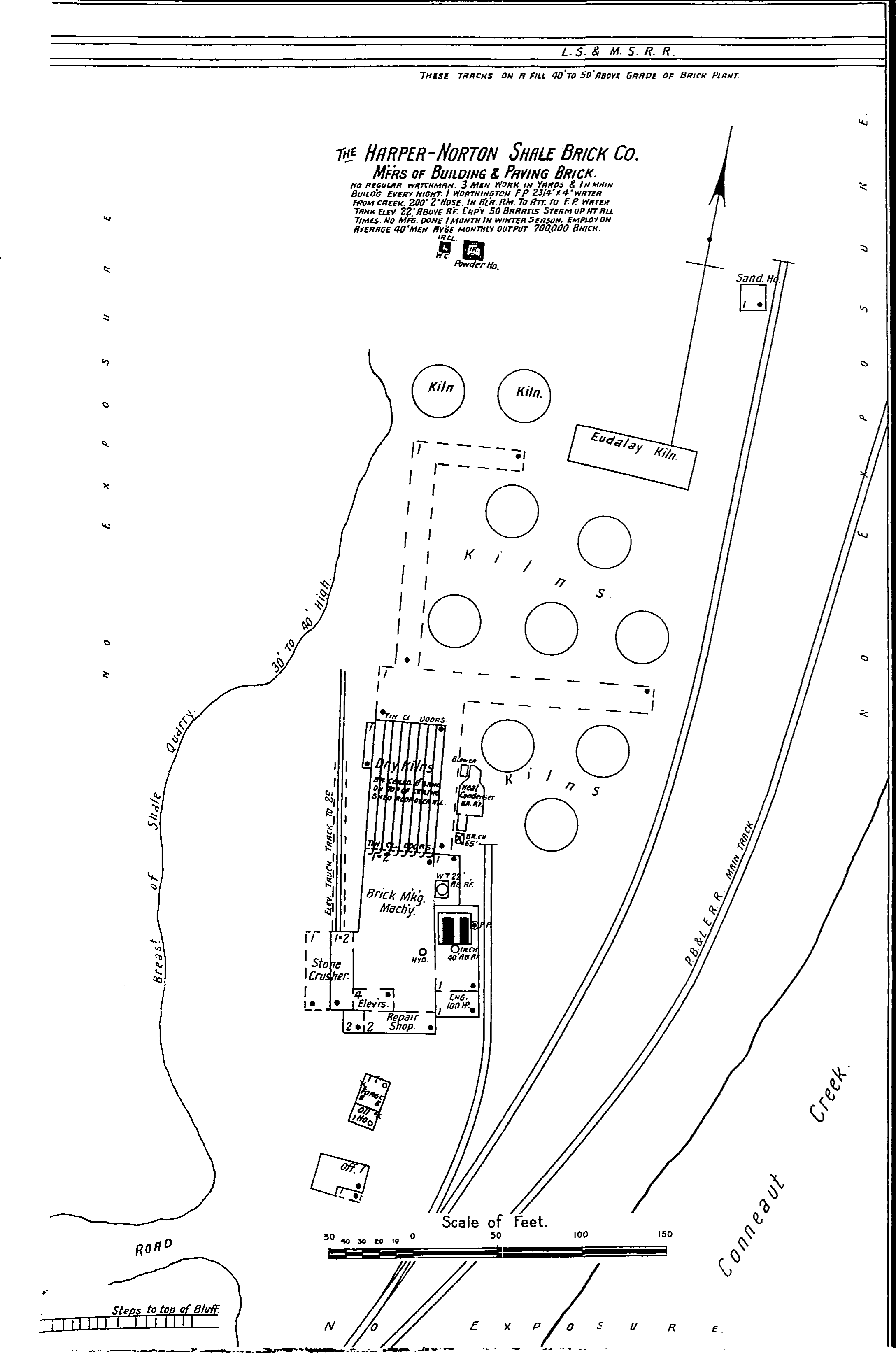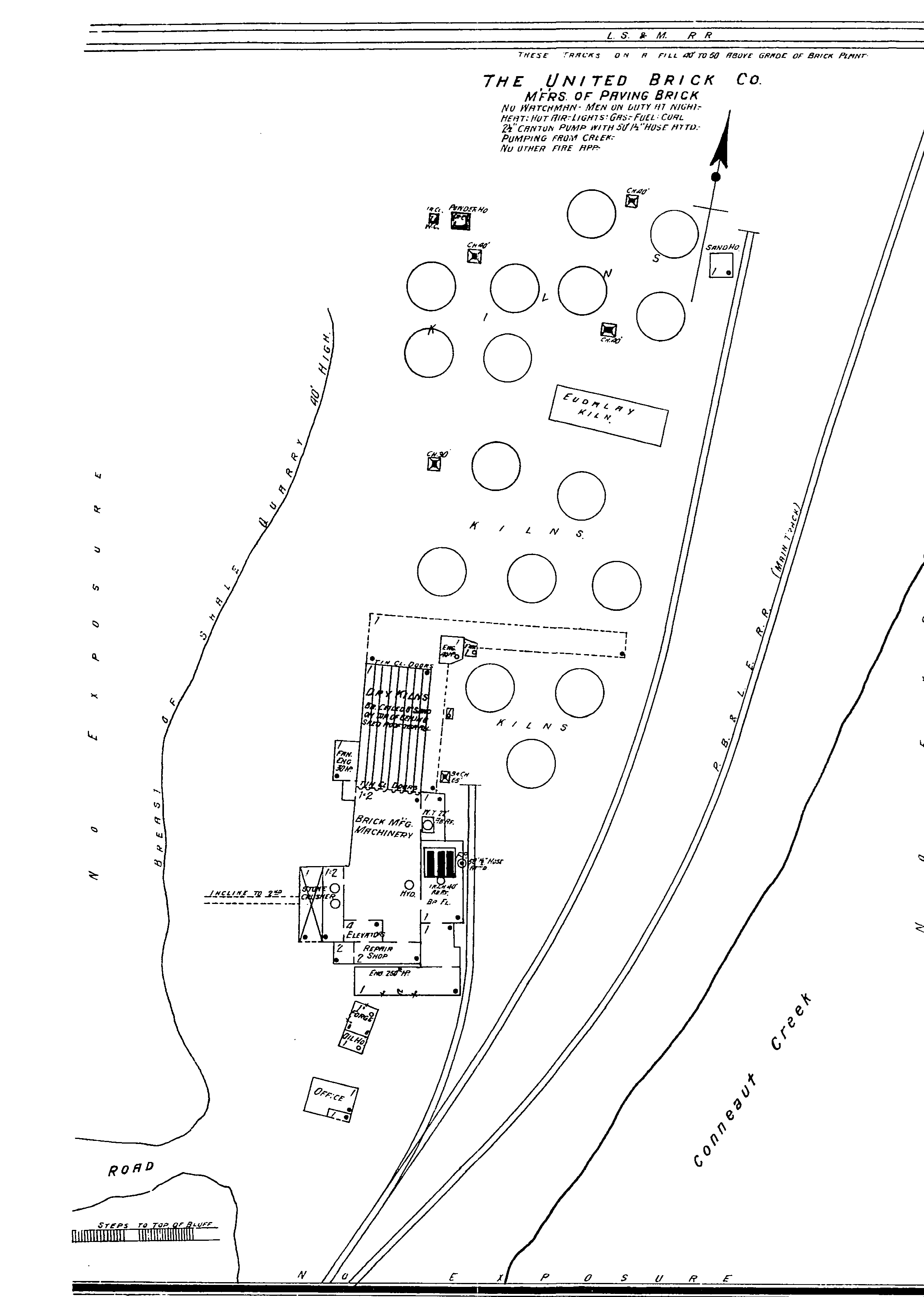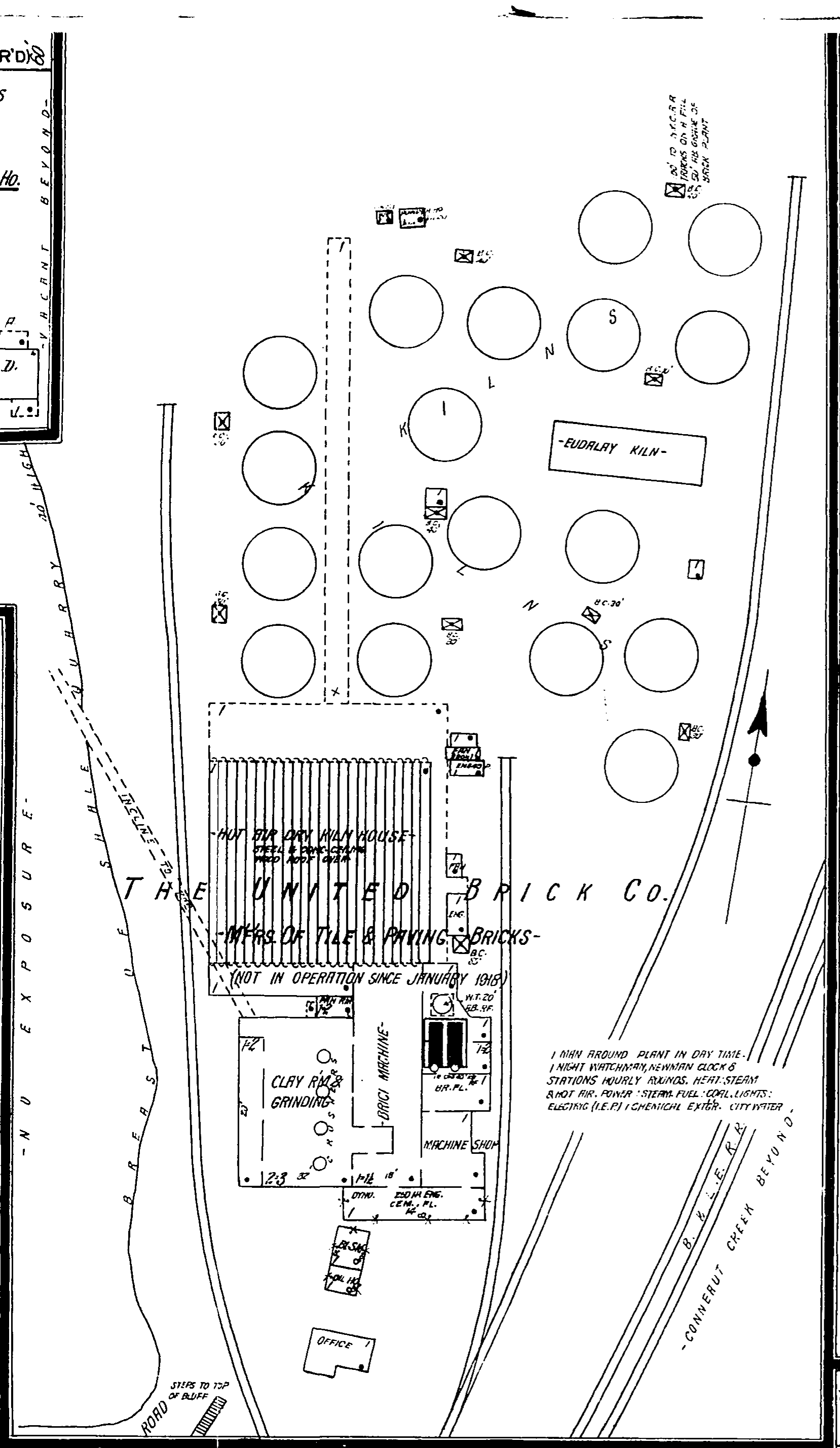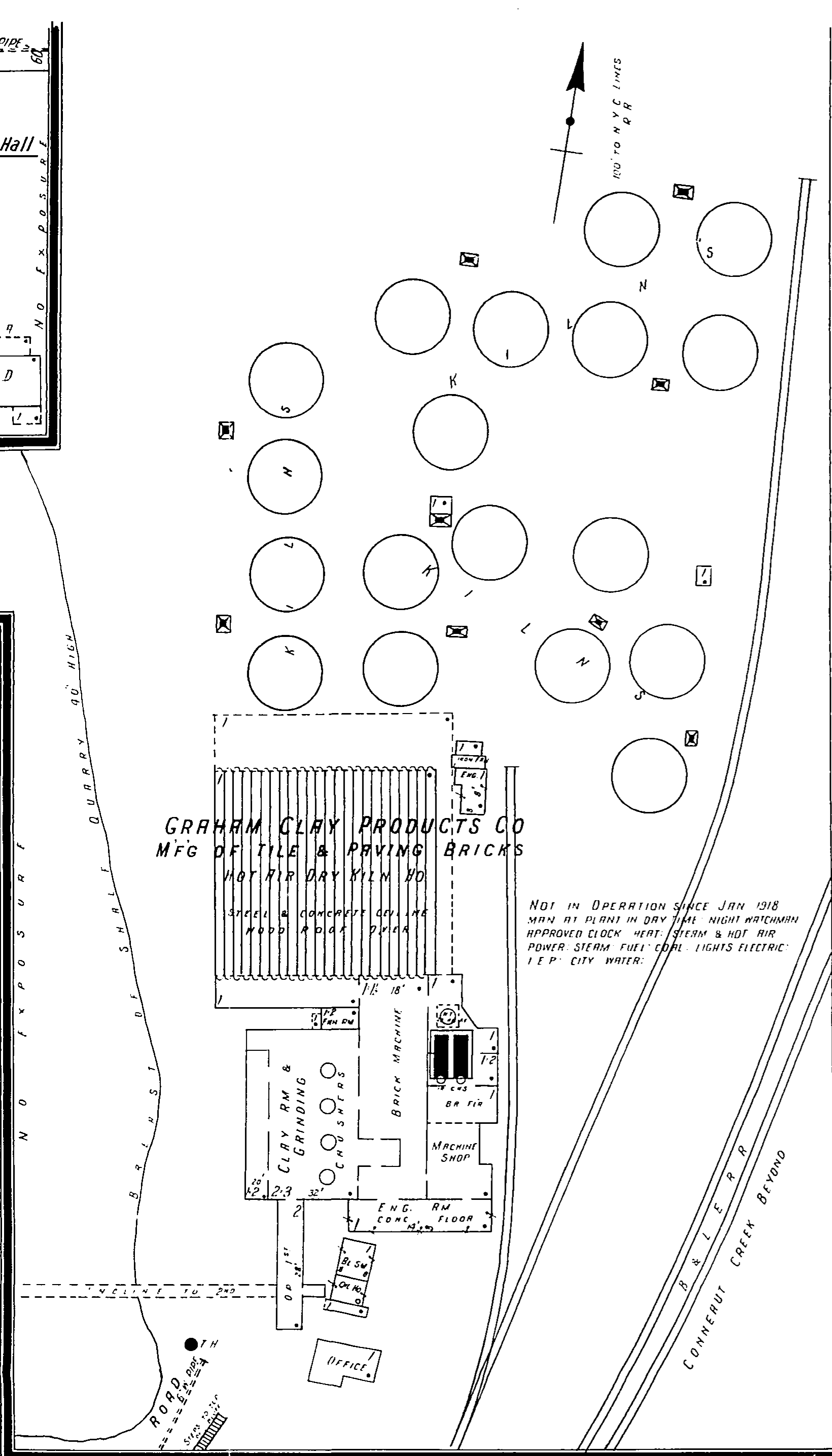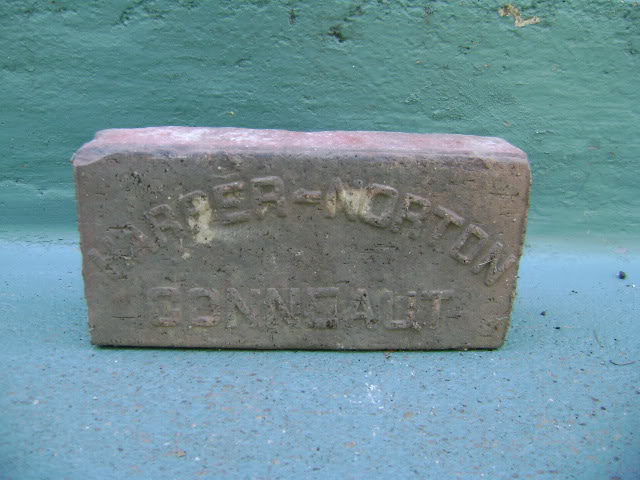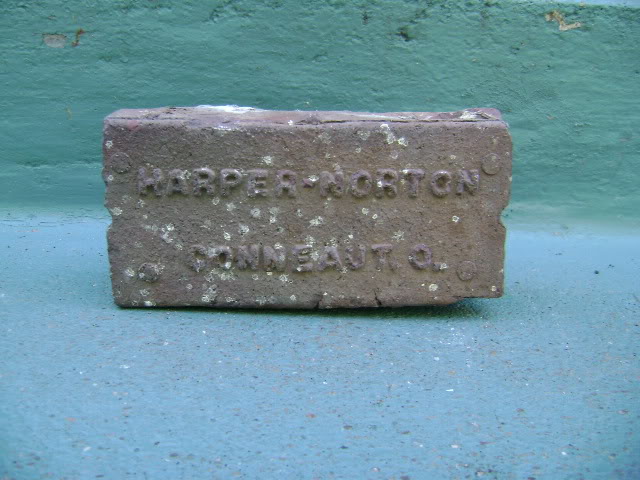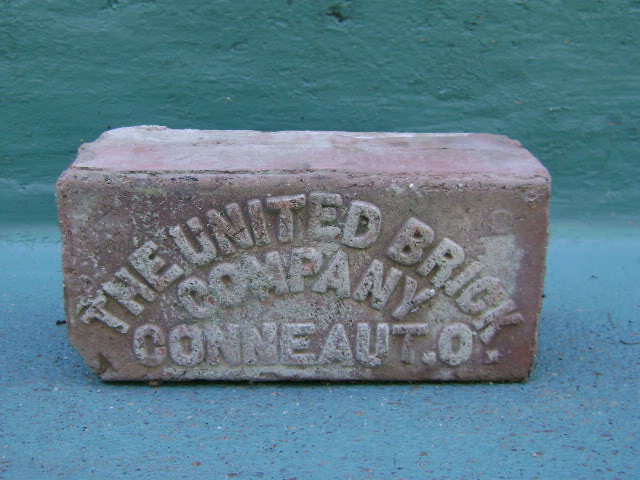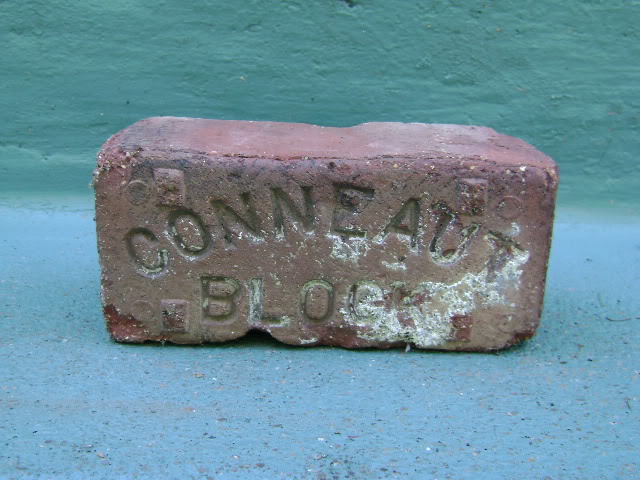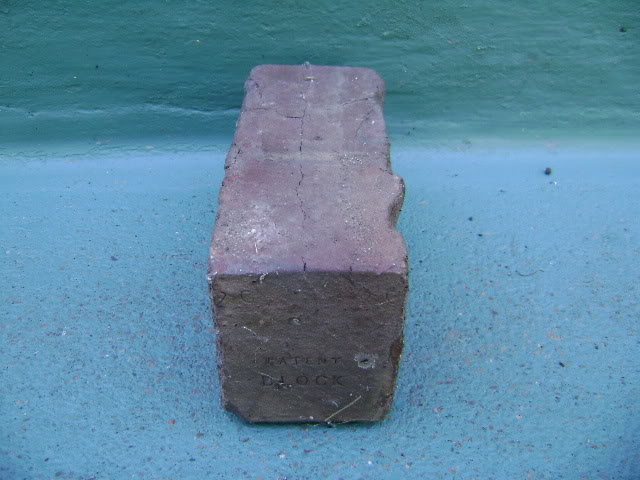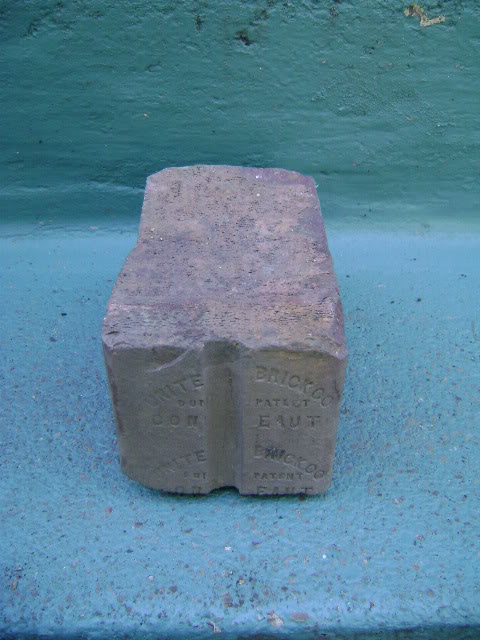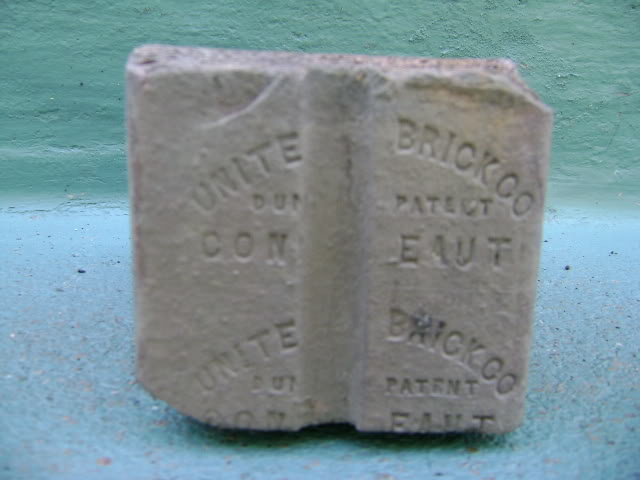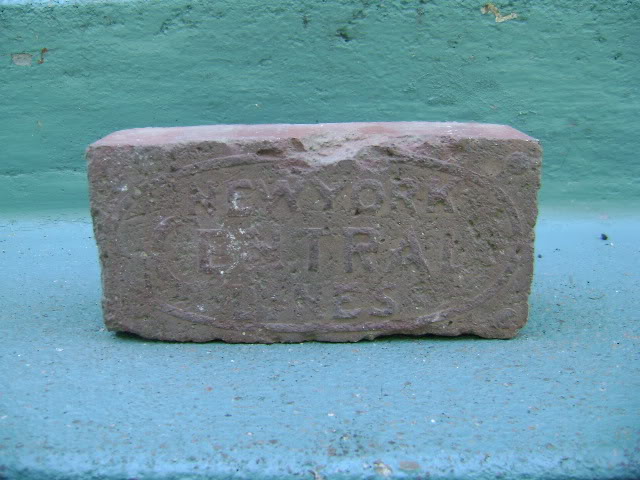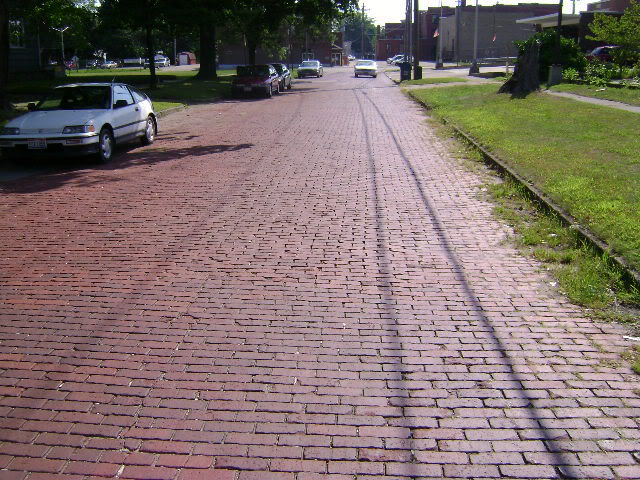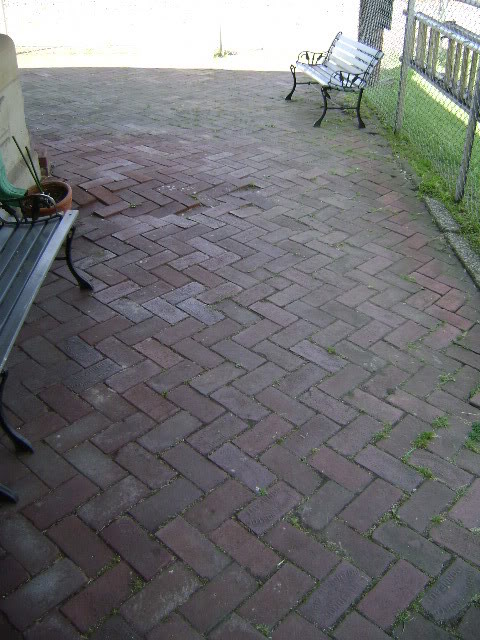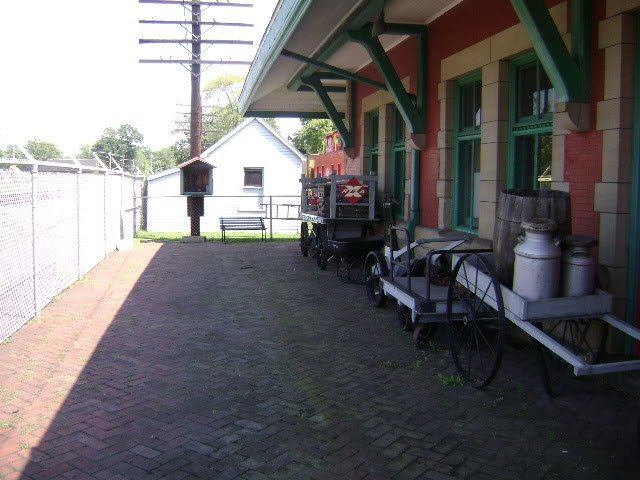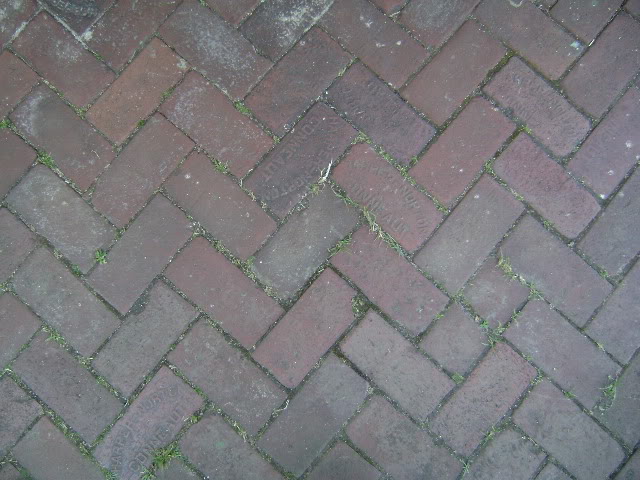Brief History
by Raymond H. Welsh (2 July 1946)
BRICK INDUSTRY
With a capital stock of $100,000 the Harper-Norton Shale Brick Co. was incorporated in February 1899. Operations began in June of that year. The plant, located on the P. B. & L. E. railroad south of the New York Central arches, had a daily capacity of 50,000 common and 22,000 repressed bricks. The shale was crushed and conducted to a pug mill where it was "tempered" and then automatically conveyed to the brick machine where dies shaped the bricks at the rate of 77 per minute.
The bricks were cut, loaded onto small cars and run into drying tunnels where they were dried-by steam and in 24 hours were ready for the kilns.
Ten large down draft kilns were erected on the Bessemer sidings. This company changed hands several years later, becoming the Conneaut Brick Co. It finally discontinued entirely the manufacture of Conneaut bricks, and its ovens and buildings were dismantled and torn down.
A famous brick patent was developed by the late Frank B. Dunn. This was known as the Dunn Wire-cut Lug Brick.
The Paving Brick Industry*
Conneaut News-Herald (17 Sept. 1895)
Mr. Ponfield of Willoughby, who has been here several times to consult Mr. Harper and others, in regard to building a paving brick plant on Harper's property, and who is a man of large experience, both as a manufacturer of brick and brick machinery, came one day last week from his home, and his son met him, coming from New York. They were here for only one day. As there were several people out of the city whom they wished to see, they looked about the city and also went to the harbor before leaving town. They expressed themselves as satisfied that the shale on Mr. Harper's land is the best in the country for the making of vitrified paving brick. They are willing to erect a plant with a capacity for making 30,000 or 35,000 brick per day, and have it running in ninety days from the time the work is begun, the plant to cost about $35,000. While here they discussed the matter with Mr. Harper and at the conclusion were satisfied to go ahead, providing the citizens of Conneaut would take stock to the amount from $12,000 to $15,000. They feel confident said stock would pay a yearly dividend from 12 to 15 per cent. Conneaut would then secure the brick required for paving at about $3 less per thousand than at the present time, and perhaps less, while its presumed that nearby cities, Erie, Ashtabula, Painesville, Meadville, etc. would consume the balance of the output. Canada would also be an A 1 market. The ferry line and Grand Trunk railway would furnish excellent shipping facilities. Mr. Penfield feels he could ship Conneaut paving brick to New York for less money than they ship brick from the Catskill, N. Y. works, as all the shale used there is transported fourteen miles to the plant, and they are obliged to use hard coal instead of soft, to burn the brick, which adds extra expense. The Messrs. Penfield offer to take an interest of $16,000 or more, while Mr. Harper will take $6,000 and Conneaut is asked to take form $12,000 to $15,000, as above stated, in an industry which will employ from 25 to 35 men the year around at wages ranging from $1.50 to $2.50 per day. Mr. Harper says he will put in the shale bed at a low price in order to start the plant. It seems as though this is an opportunity for Conneaut to secure a paying industry at a very small outlay of money. The par value of the shares has not been decided upon, but they will probably be placed at $25.00. The Messrs. Penfield will be in the city again in a few days to talk the matter over with our citizens and ascertain what can be done.
A NEW INDUSTRY*
Conneaut News-Herald (9 January 1899)
An Assured Thing for Conneaut—Paving and Building Brick to be Manufactured Here—A Company With $30,00 Paid up Stock.
For the past three or four years Lewis Harper has been at work here trying to interest C0nneaut capitalists in an enterprise for the manufacture of paving and building brick from the shale which exists in almost endless quantities on his property just off Hayward Avenue.
Some time ago when the matter was being strongly talked of here experts were invited to analyze the material and their verdict was that it was of a most superior quality for the manufacture of paving brick. After many futile attempts to arouse enough interest among people of this city to form a company for this purpose, Mr. Harper sought to interest outside capital with the result that a company has been formed with paid up stock of $30,000 and that another new industry is an assured thing for Conneaut. Mr. Harper's partners in the enterprise are people from Boston and Cleveland, two of them being ladies.
The firm will be known as Harper, Norton & Co., Charles William Norton and son, Harry Lowell Norton, of Boston, being directly interested. Plans for the immediate opening of the plant have already been formulated, the order for $10,000 worth of the latest improved machinery being now in the hands of a Bucyrus firm. The location comprises seventeen lots in the Harper plat north of the ravine, and extending to the Lake Shore railroad. All the machinery will be placed in a substantial brick building so that the plant may be operated all the year round.
This building will contain thirteen pieces of heavy machinery suitable for the manufacture of paving and building brick of the finest quality. The kilns are to be of the "down draught" type, the latest improved. Mr. Harper states that the capacity of the plant will be from 25,000 to 35,000 brick per day and that about thirteen hands will be employed at first. Ground will be broken at once for the erection of the buildings, kilns, etc., and since the machinery contract calls for delivery within thirty-five days, it will not be long before he operation will being. Facilities for shipment are of the best and doubtless the product will find ready market in the large cities.
NEW MACHINERY*
Conneaut News-Herald (9 July 1901)
Has Been Placed in the Brick Plant Recently and Capacity Increased
The Harper-Norton Shale Brick company has been adding a lot of new machinery to its plant recently. Since Mr. F. B. Dunn became manager in January he has been striving to improve the output and increase the capacity of the plant.
An automatic cutter has been put in, which cuts the wet material into brick size when it comes from the mixer. Formerly the bricks were cut by a machine operated by a hand lever. The new machine cuts quicker and does not break the edges of the bricks. Two new repress machines are at the plant ready to be put up and and a new dry pan has been placed for crushing the shale.
New screens and elevators were put in recently. The kilns are being improved by lessening the size of the furnaces and new bottoms will be put in many of them as soon as possible.
The company has not been able to lay in stock of bricks and there are only a few thousand in the yards. The Ashtabula power house order has been filled with the exception of a few thousand.
Broad Street Pavement*
Conneaut News-Herald (6 Sept. 1902)
To those interested in above improvement:
We have been advised by two councilmen that unless something was done by us before Monday evening, September 8, the council would in all probability take necessary action to provide for foreign brick to be used in Broad street pavement, and furthermore that the citizens were up in arms over the delay in getting the work done.
In our own defense we would respectfully inform all parties interested that we have planned our work all summer with a view of getting all paving done by November 1, and we still expect to do so. Had we put forth every effort to get the pavement completed early in the season we might have been without orders now, and the plant be idle this fall and winter. Instead, it has been our aim to see that the plant be operated to its fullest capacity and at the same time increase and improve it whenever and wherever we deemed it advisable. Judging from the quantity of brick delivered on the streets during the past month we would not complete the work this year, but this was cause by our having closed down twice this summer to increase capacity and improve the plant, and these changes have enabled us to proceed form now on and accomplish what we had set out to do, i. e., complete Broat street pavement by November 1.
We regret that the citizens have not taken greater interest in the welfare of this industry, which provides employment for about forty-five men twenty-six days per month, twelve months per year, at an average of $1.84 per day of ten hours, or in other words, pays for labor each month about $2,2000.
We now extend to all interested a cordial invitation to call and inspect our plant on Monday, the 8th inst., and see for themselves what we are now able to produce in the way of paving brick for Broad Street.
Harper-Norton Shale Brick Co.,
F. B. Dunn, Gen'l Mgr.
LOCAL PLANT'S PRODUCT HARD*
Conneaut News-Herald (9 July 1906)
TEST OF PAVING BRICK REVEALS THE FACT
Manager Dunn of Local Plant and Engineer Lininger Investigate With Standard Test
A thorough test given the paving brick turned out by the local branch of the United Brick company proved that the output of the Conneaut plant is of as high grade quality as is manufactured anywhere in this country.
The test was applied by Manager F. B. Dunn of the plant and City Engineer T. F. Lininger on Saturday, the standard Rattler test being used to prove the brick. A dozen blocks were placed in a cylinder, together with heavy weights of iron tubing and the cylinder revolved at speed of thirty revolutions per minute for an hour when it was stopped and the contents taken out.
When the blocks were placed in the cylinder they weighed 112½ pounds but when they were examined after the test it was found that they had lost 15½ percent, weighing only 95 pounds. This percent of wear proves that the local blocks are as high grade as the Metropolitan brick, which have heretofore been regarded as the best known to the trade.
Dunn's Wire Cut Lug Brick Co.
Conneaut News-Herald (11 December 1909)
AND ITS PATENTS GET ENTHUSIASTIC ENDORSEMENT FROM A PENNSYLVANIA SOURCE
Mr. Frank B. Dunn, of Conneaut, Ohio, who is visiting his brother-in-law, Wilbur E. Wilson, and family has invented a simple method of making a lug on a wire-cut brick, that promises to revolutionize the paving brick industry in this country. One of Mr. Dunn's machines has been recently installed in the Corry Brick & Tile Co.'s plant in this city, and works to perfection. For the information of those not familiar with the subject, it may be stated that for street paving it is desirable to leave a little space between the bricks in order that the filler may form a bond. This is accomplished by means of a couple of lugs or ribs on the side of the brick. Heretofore, in order to put a lug on the bricks it has been necessary to repress them, adding to the cost of production and not improving the quality, only in appearance. Mr. Dunn's invention, by a simple device, cuts the lugs on the brick in the first place, doing away with repressing.—Corry, Pa., Journal.
THE CONNEAUT WIRE CUT BRICK HAS PASSED TWO STATE TESTS*
Conneaut News-Herald (27 June 1910)
The Only Brick Tested By New York Highway Department Which Met Requirements
On Saturday the Dunn Wire-Cut Lug Brick Company received a report from the Ohio State university that paving brick made at the United Brick company plant, by the Dunn process, for the Kinsman road, a state paving job, had been tested by K. B. Ward, the engineer of the state highway commission, in charged, and passed the test with approximately four per cent less of loss than the allowable loss of 22 per cent.
The brick tested were taken from the mess delivered on the job and were not samples submitted for that purpose.
On the same day the New York state highway department tested brick at the Rensselaer Polytechnic Institute at Troy, N. Y. There the state test is more severe and the specifications more exacting. The wire-cut-lug brick manufactured by the United Brick company of Conneaut by the Dunn process passed the test, and it was the only brick tested which stood the test. The Conneaut brick was delivered for use on a state highway near Buffalo.
Thus, in one day, the Dunn wire-cut-lug-brick withstood the severe official test in two states.
Reports from manufacturers say that with the Dunn process they are getting from 10 to 15 per cent more No. 1 product from their kilns than under the repress process, and that the wire-cut-lug brick shows from three to six per cent less loss than the repressed brick under the rattler test.
Although the first Dunn wire-cut-lug machine was put on exhibition in February five machines have been contracted for, two of them in the Pittsburg district. Three are in operation—one here, one at Corry, Pa., one at Marietta, O. The Pittsburg concern, in order to get samples of the wire-cut-lug brick out early have arranged to ship a carload of ground clay to the United Brick company here to be made into brick.
The Dunn machine is meeting with great favor wherever its operations are seen. Its merits are instantly recognized and practical use demonstrates its superiority. There is no doubt that a big future is before the Dunn company, and the manufacture of the machines is bound to become a big industry.
The Home of the Dunn Wire-Cut-Lug Brick
The Clay Worker, vol. 49, no. 1 (Jan. 1914): 56-8
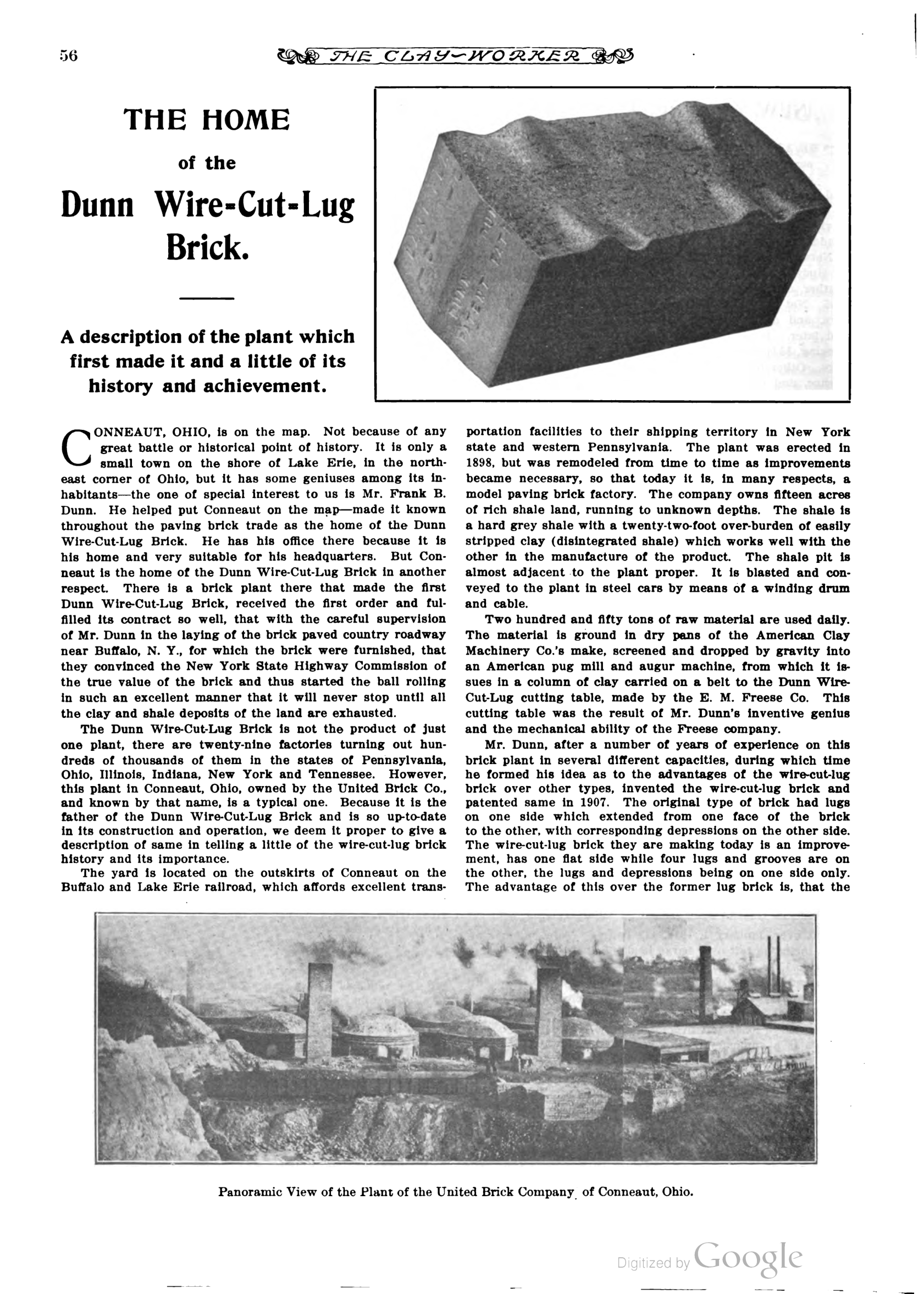
| 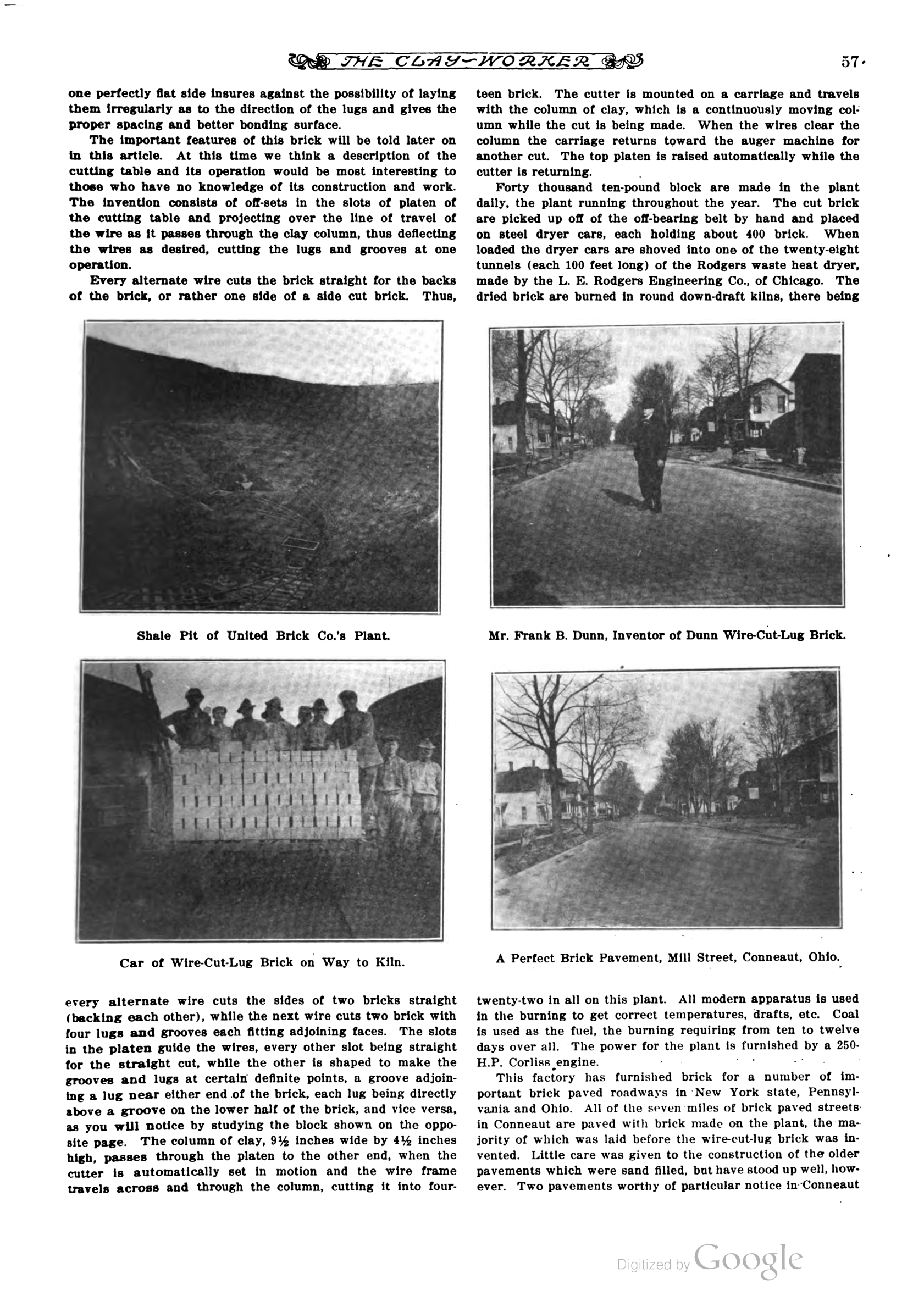
| 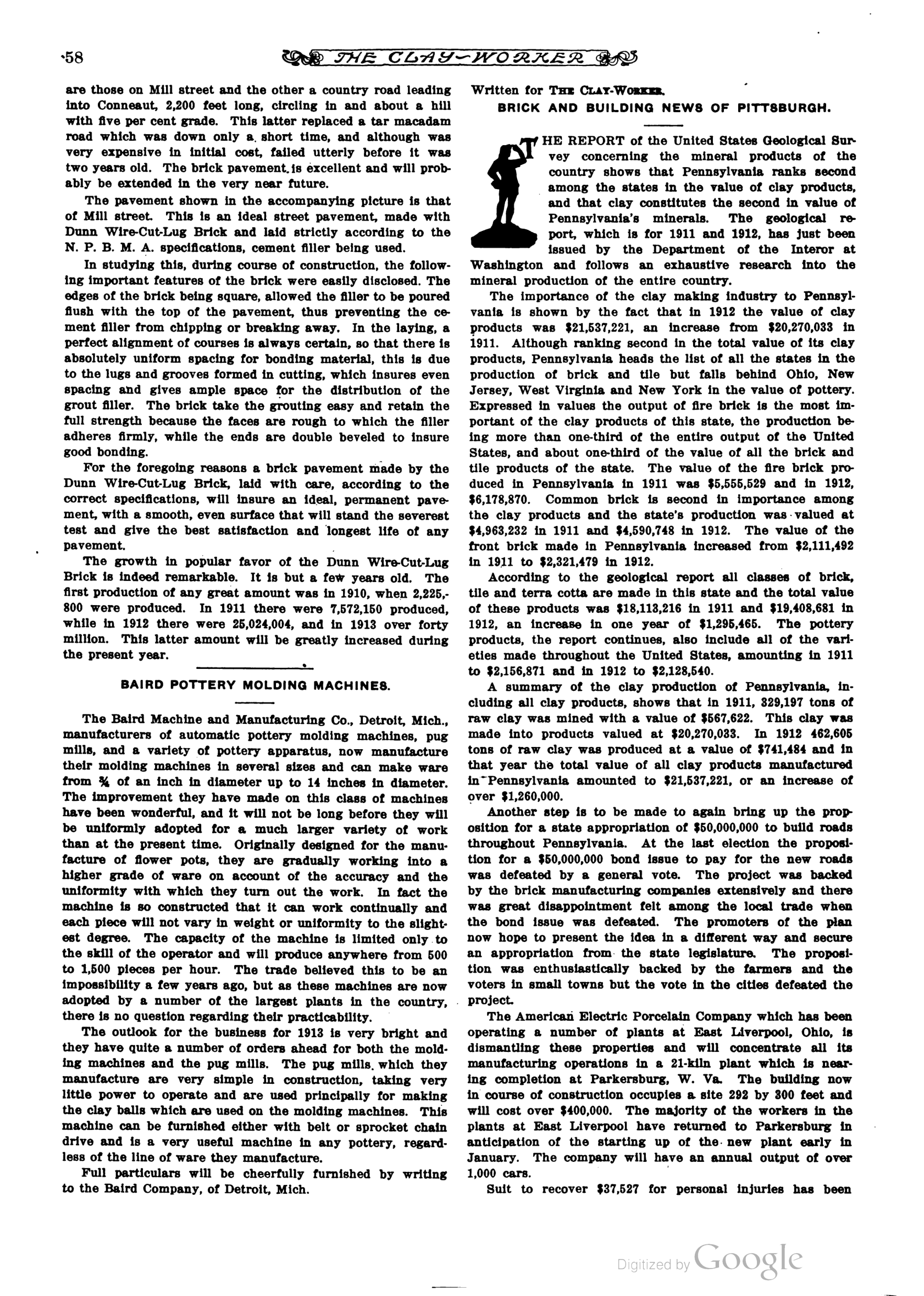
|
|
| Click on Images for Full Size
|
|
Graham Clay Products Co.
Brick and Clay Record (22 August 1922)
The Graham Clay Products, Co., of Conneaut, Ohio, has been incorporated with a capital of 500 shares, no par value, to manufacture brick, hollow building tile and other clay products. Incorporators are Charles Follett, John W. Eckleberry, C. M. Horn, Fred J. Perkins and W. B. Stewart.
NEW PLANT HAS 20 KILNS
Brick and Clay Record (8 August 1922)
Operation of a new brick and tile plant in Northern Ohio starts with the beginning of August. The new concern will be known as the Graham Clay Products Co., which takes over the plant of the United Brick Co. at Conneaut.
Bert J. Graham, well known in the clay working industry in the Central West and other sections, is president of the new Graham company. Associated with him are: E. D. Carter, president of the Pennsylvania Fireproofing Co., Erie, Pa., as vice-president; and O. W. Renkert, vice-president of the Metropolitant Paving Brick Co., Canton; E. S. Hanson, vice-president of the Central National Bank, Cleveland, and W. B. Stewart, attorney, Cleveland, as directors.
The Conneaut plant has been remodeled, new machinery added, and the whole brought up to the most modern in equipment and operation. There are 20 kilns, which makes it one of the largest plants in the Ohio clay working district. In connection with the improvements, the new company has acquired additional clay land nearby, which is estimated to give it a 20 years' supply. In addition to brick, interlocking tile will be made.
Graham Tile Products Now at Capacity Speed*
Conneaut News-Herald (16 June 1928)
With its plant running at capacity speed and 47 men being employed all of the time Graham Clay Tile Products company at the foot of Ackerman-st, is looking forward to a bright business future. The plant at present time is turning out 125 tons of finished tile daily, according to officials.
The company has several large contracts to fill at the present time and all its work is being directed toward the fullfillment of these contracts.
The largest contract is with the Delray plant, the new Detroit Power plant of the Detroit Edison company. This building will take 320,000 tile.
The company also has two other contracts of considerable size. They are the Keystone Athletic club and the new Koppers building, of Pittsburgh, Pa. The combined number of tile for these two buildings is about 600,000.
Officials of the company are looking forward to a very bright future and state their business is increasing daily. The company manufactures building tile only and the clay is dug from the company's own clay banks near its plant.
Frank B. Dunn, 309 Monroe-st, nationally known for his contributions of modern paving brick, today had been awarded a patent by the United States Patent Office to cover his design of a new type of end lug for bricks. A refinement of the face lug production under the patents of the Dunn Wire-cut Lug Brick Co., the new device consists of diagonally projecting lugs at each end of the brick.
Application for the patent was made in October, 1933. Since that time several million paving bricks have been produced with the end lug. The patent examiners, in granting the patent last week, approved it as to 11 points of originality and improvement. Mr. Dunn retained complete rights to commercial use.
The face lugs, earlier designed and in use for many years, served a tw0-fold purpose. In the first place, the lugs separate the bricks from one another as they are laid in courses, allowing space for such a filling medium as asphalt. In the second place, the fragile face lug acts as a buffer between trick, crumbling when the paving blocks expand under intense summer heat. The stress is transferred from the brick to the lug, and when the lug fractures, the brick remains intact.
The new end lug serves as a "locking" device. The lug at one end extends diagonally and oppositely to the lug on the other end of the brick. The bricks thus lock in place by means of the lug and tend to prevent deformation of freshly laid courses. Opposition of the lugs also overcomes a mechanical difficulty which has always stood as an obstacle to the manufacture of end lug brick at the kilns, as they do not crush when moist clay is placed in the kiln racks.
Mr. Dunn entered the line of brick manufacture in 1893 when he was hired at a Beaver county, Pa., brick plant. He has been identified with the manufacture of clay products since that time. He has been in Conneaut since 1901.
